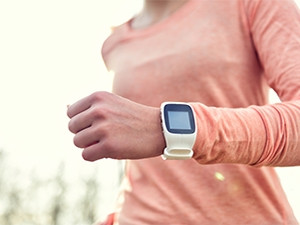
To stand out in a crowded market, wearable manufacturers will need to start incorporating intelligent experiences into their products, says Gartner.
These experiences refer to software that will provide tailored feedback to the wearer based on the information it has gathered from them, or allow the user to easily access data on the go.
Roberta Cozza, research director at Gartner, says: "There is genuine scope for wearables to create intelligent personalised experiences that really add value."
Cozza explains fitness or medical wearables may integrate a 'smart coach' that gathers the user's biometric data, then uses machine intelligence software and analytics to provide real-time actionable advice.
For example, a fitness tracker watch or chest strap would monitor the user's heart rate and alert them through connected headphones or a series of vibrations to slow down when they are at risk of injury.
Gartner says smart coaching in wearables is slowly emerging, but is generally only on high-spec products such as the Moov, GymWatch and Jawbone UP3 wristbands, and smart garments from Athos and Sensoria.
The research firm predicts sales of wearables will increase from 275 million units in 2016 to 477 million units in 2020, representing growth of $61.7 billion in revenue.
Wrist talk
Cozza says including virtual personal assistants (VPAs) in wearables has the potential to transform the nature of interactions with the devices, while providing a gateway to applications.
The challenge at the moment, she says, is that smartwatches have limitations in terms of form factor, with no screen or a small screen and controls. This limits what apps, data and information the wearer can access on the go.
VPAs will help with everyday tasks such as directions, calendar entries, to-do lists and sending messages. Apple and Google have already expanded Siri and OK Google from smartphones to wearables.
"These VPAs [Siri and OK Google] can count already on their large smartphones and PC user bases, but their functionality on both smartphones and associated wearables still remains limited to very basic interactions," says Gartner.
"The move from the main players here such as Apple and Google to open to third-party development will significantly enhance the user experience."
VPAs are going to play an important role in the next few years, says Cozza, and wearable manufacturers need to take notice.
"In 2017, we expect artificial intelligence, machine learning and VPAs to be a major strategic battleground for the mobile platform," says Cozza.
"Gartner predicts that by 2020, 40% of all mobile interactions will be facilitated by smart agents as we move into the 'post-app era'."
Wearables will also have to improve battery life, biometric technologies, security, design and sensory accuracy as they approach mainstream adoption.
Last month, International Data Corporation reported people in the Middle East and Africa (MEA) regions were buying more wearable devices.
The global research firm said the MEA wearables market experienced 65.3% year-on-year growth in shipments in the first quarter of this year.
World Wide Worx MD Arthur Goldstuck said the popularity of wearables in SA is related mainly to fitness.
He noted this was because SA is a fitness-conscious country and medical aid rewards programmes, such as Discovery Vitality, are pushing activity monitors as a way to earn points.
Share